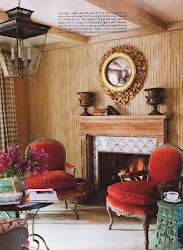The Lavabo, my other Kitchen Sink

Lavabo, "to wash hands". In many Mediterranean countries, the Lavabo serves as a means to gather water. When it rains, water is collected from rooftops. and stored in the upper basin of the Lavabo.

In my kitchen, the Lavabo serves as the "other kitchen sink". Hand painted Delft style tiles, similar to those from the 17th century, prevent water from damaging my straw walls.


Gene mixing wet straw into mixture of dry wall compound and sand. The tongue?
A trowel and a little elbow grease .... it is surprisingly easy. And, you don't have to finish the project in one day. The next day or the next week, you can begin where you left off.
A trowel and a little elbow grease .... it is surprisingly easy. And, you don't have to finish the project in one day. The next day or the next week, you can begin where you left off.

I don't have to wait for rain. My water source comes from the mountains.
Gina





















Amazing!! As always, it amazes me what you've created in your home. Beautiful and unique! :) – g
ReplyDeleteFantastic blog! I love your walls and ther ceramics are killer!
ReplyDeleteGeorgianna, thank you for stopping by. I am always so pleased to hear from you. Your comments always mean so much.
ReplyDeleteTheresa, your blog is truly fantastic. The rich colors, like the jewels at the Topkapi... a treat for they eye. Your talent is amazing!
ReplyDeleteIs that you Gina? The lavabo, the tiles, the plates and the chair even, EVERYTHING is so pretty in your house! I'm curious about the straw mixture, can you tell us more about it?
ReplyDeleteHi Francesca,
ReplyDeleteYep, that's me in my not so glamorous self.
Do you have joint compound or something similar in Italy?
Break up claen straw into 6 inch (or so) lengths. Soak overnight in water. Mix joint compound with 35 grit builders sand and wet straw in a wheel barrel. Proportions? I use 10 full cups of sand to one box of joint compound. If you don't use sand the walls will crack.
If you have too much straw in the mix, no problem, it will gather up under your trowel and you can dump it into a bucket.
Now, trowel onto the walls in a criss cross fashion. Every person has a different signature. So it is a good idea if only one person actually applies the mix. You can now press on more straw if you want. Use a flat object like a spatula.
This is not a good wall treatment where a lot of cooking is going on. You can't wash it. I will have to replace some of my straw walls near the range and ovens. But that is easy to do. Just wet the walls and scrape off. Then replaster.
You can seal the walls with a proprietary sealer in a clear or slightly antique color. The straw will glisten and shine under certain light conditions.
By the way, this straw treatment was very common in the South of France.
Nice seeing you Gina! Many thanks for the explanation, I never heard of it, it sounds so ... "green and simple":)! It might be that our floors and ceilings are made in somewhat a similar fashion (the outer layer at least), as they are called "canniccio".
ReplyDeleteHi Francesca,
ReplyDeleteInteresting. Have not heard of "canniccio" will check into it.
Have a great day.